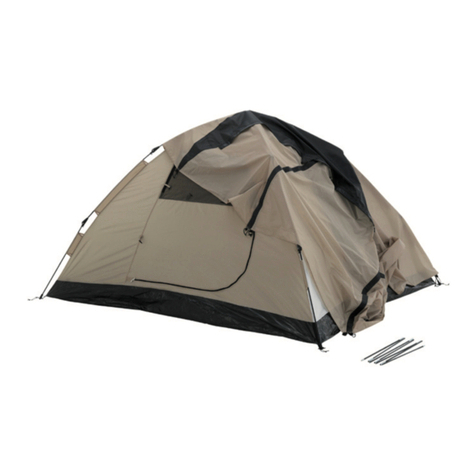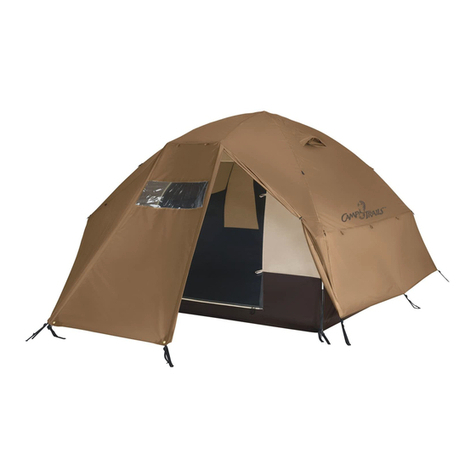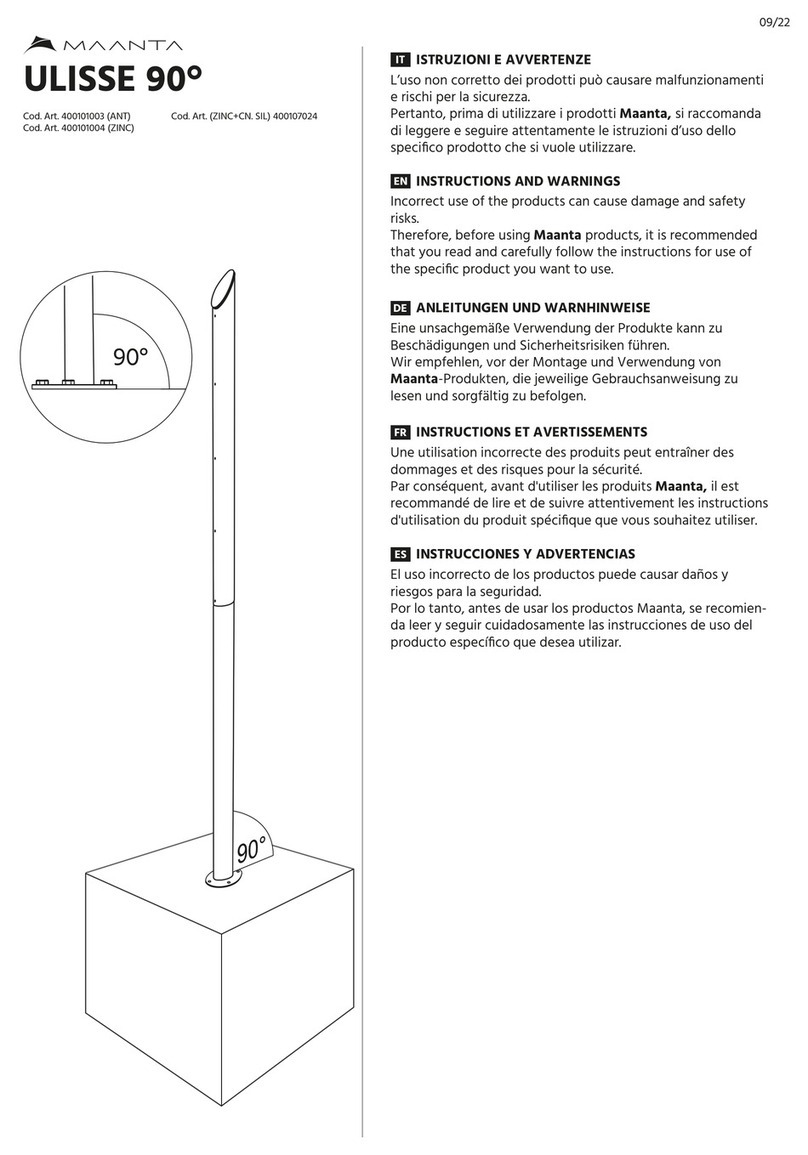
6. Air expands and contracts as it warms and cools. As the temperature falls during the night
the air tubes will lose some pressure leaving them looking a little slack. This is normal
and will disappear in the morning as air in the tubes expands with the rising ambient
temperature. This can sometimes be mistaken for a leaking air pole.
7. Do not over-inate a cold tent in the morning as there is a risk that the pressure could get
too high when it gets hot during the day.
8. Learn how your tent behaves under different weather conditions. Squeeze the air tubes
inside the tent and feel the pressure. If they seem to get too hard in the midday heat
check the pressure by cracking open the ination valve to release some air and then
connect the pump and apply pressure to the recommended 7psi / 0.6 bar.
9. If you follow the above you will enjoy many happy camping holidays with your tent.
Pitching Instructions
Dwights Air tents represent the latest technology in family camping and are designed to
make pitching fast and easy. Please read and follow these instructions to ensure your tent
functions correctly and to optimise its life.
1. Choose a site that is at and if possible protected from the wind. Also a site that will drain
well if it rains. Avoid pitching under trees as falling branches, sap etc could damage your
tent. Try to clear the site of sharp stones twigs etc which can damage the groundsheet.
A footprint groundsheet is available as an optional extra. To protect your tent from dirt and
damage it is recommended to use a Dwights footprint. Footprints not only protect your tent
oor but also make pack down a faster and cleaner process. The ground sheet should be
pegged down in the correct position rst with the tent placed on top. Dwights footprints
are slightly smaller than the size of the tent oor to ensure water does not collect between
the two layers. When laying out and pegging the tent on top of the footprint it is very
important to make sure the tent is central over the footprint. A footprint can also help to
reduce condensation. Try to set your tent up facing away from any breeze.
2. Before unrolling your tent completely we suggest taking note of how it is folded to make
it easier when it comes time to pack up. A couple of photos with your phone could prove
useful. Lay the tent out in the required position. Peg each corner of the tent ensuring you
have a small amount of tension between the pegs so that the oor sits as at as possible.
Unzip the doors to allow air to enter the tent as it is being inated. If the doors are closed
this can create a lot of additional stress and can damage your tent. Keep the mesh doors
zipped up to help keep the tent in the correct shape as it is being inated.
3. Before starting the ination process it is very important to understand the double action
pump components and how they operate. The pump comes with an overload valve which
will stop the pump from over inating the tent. The overload valve is attached to the pump
rst, then the pressure gauge. Next, the pump hose is connected to the pressure gauge.
4. Starting from one end of the tent remove the valve cap and attach the pump nozzle.
Be careful to not cross thread the valve and that it is rmly screwed in to avoid leakage.
Pump up each air pole to 7psi/0.6 bar. You may need to help the pole stand up so that
it inates evenly. Check that the base of each air pole is sitting correctly on the Velcro
patches on the oor of the tent. Only use the hand pump supplied as this has a pressure
gauge which shows the recommended pressure.





















